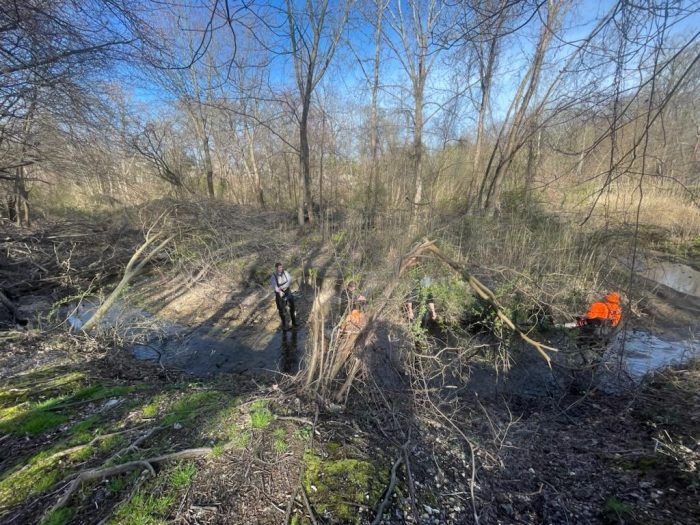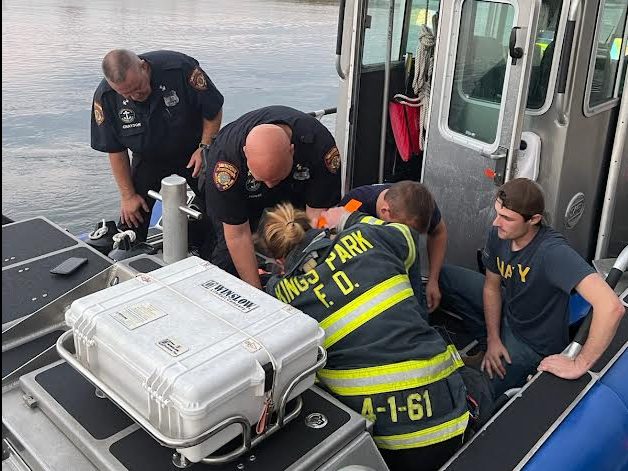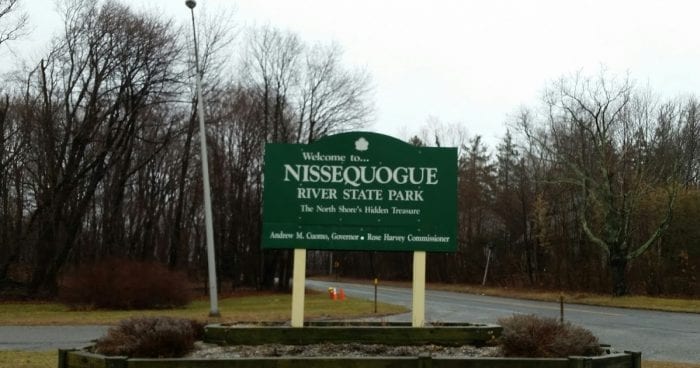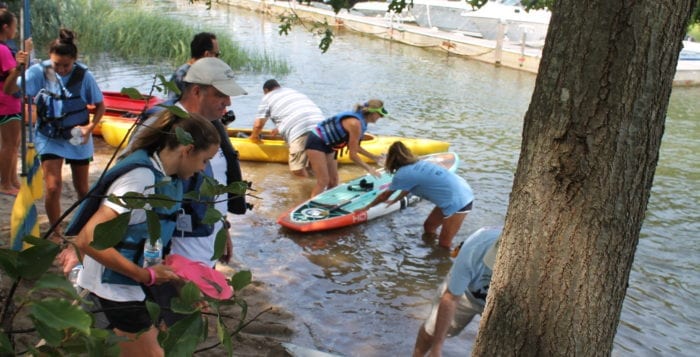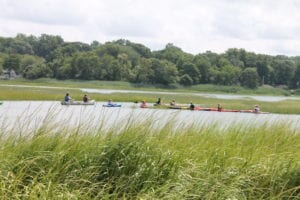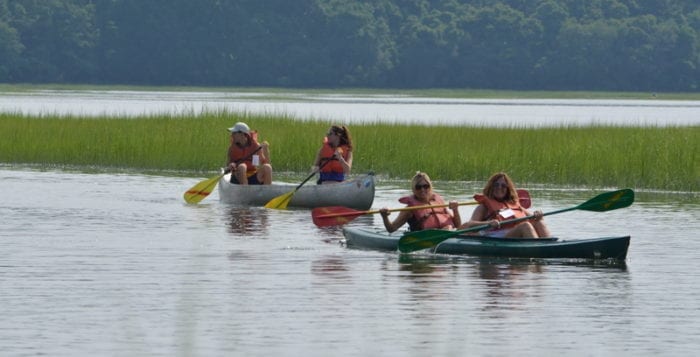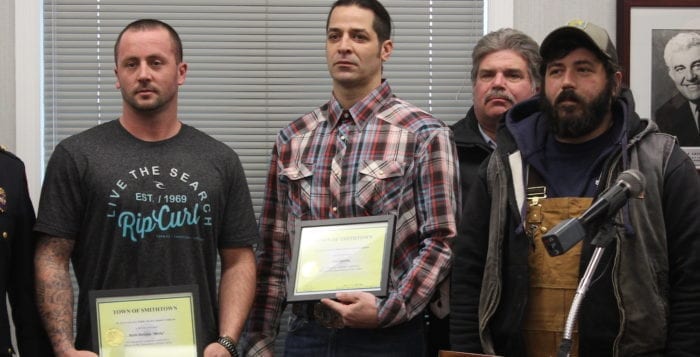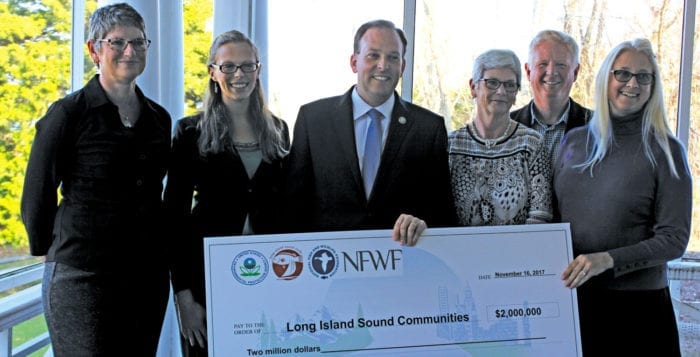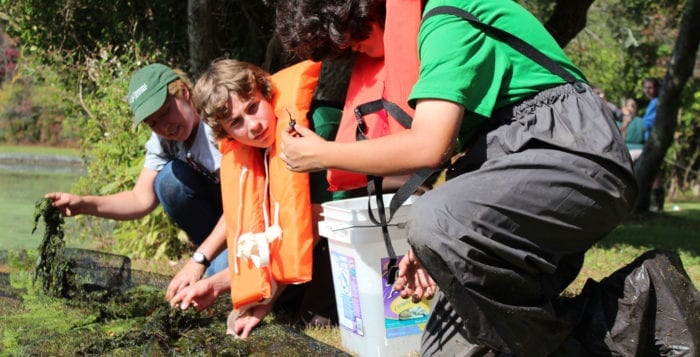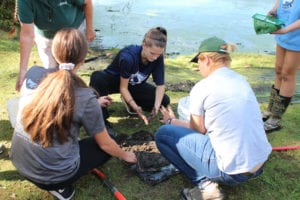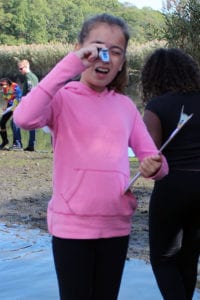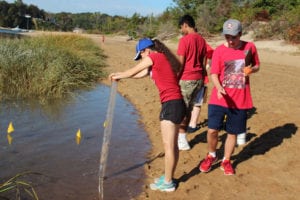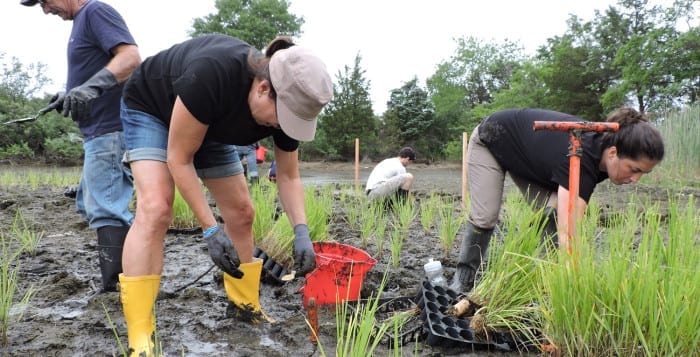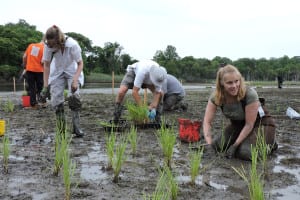This spring, the Town of Smithtown Stream Team kicked off an annual stream cleaning of the Northeast Branch of the Nissequogue River. This project began on the morning of Tuesday, April 11, and continued through Friday, April 14. Multiple levels of government worked together to conduct a thorough and efficient cleanup of our town’s waterways for the second year in a row.
Crews started working on sections of the East Branch from Route 347 to Stump Pond in Blydenburgh Park by removing fallen branches and debris that had accumulated, slowed the flow and created stagnant water. Other regions focused on included near Harrison Pond in Kings Park and near Hunts Pond in Hauppauge. Many areas that were cleaned as part of the 2022 stream cleaning were checked and cleaned again as needed.
There are multiple environmental benefits to stream cleaning. Removing debris prevents standing water that attracts more mosquitoes to the area. Additionally, with reduced flow of the stream, water cannot flow away, so potential flooding by surface or groundwater can be reduced with cleaning.
Workers from the Town of Smithtown Parks Department, Town of Smithtown Municipal Services Facility, Suffolk County Vector Control, Suffolk County Parks, Village of the Branch, and Town of Smithtown Highway Department participated in this effort. The cleanup was organized by the Town of Smithtown Department of Environment and Waterways and Environmental Protection Director David Barnes.
About the Stream Team:
In search of proactive measures to address flooding, high water table issues and reducing pollution caused by stormwater runoff, the Highway Department teamed up with department experts in Environment and Waterways, Engineering and Parks to create a Stream Team. This group works together to study and inspect the small streams beneath us for blockages, sediment and invasive species. The team will create a database, mapping out areas where water struggles to flow through, and will create a plan to remove harmful debris, invasive species and other blockages, which prevent the natural filtration and movement of water. This is a game changer for our local ecosystem and water quality.
The Stream Team engages with various neighborhoods, residents and each other to clean and maintain areas where sediment buildup and poor water flow causes flooding issues for residents. The plan moving forward is to maintain these clean streams through proper management and partnership, giving local residents peace of mind during significant rain events.
This program is spearheaded by department leadership; Parks Director Joe Arico, Assistant Town Park Maintenance Director Tom Heester, Environmental Protection Director David Barnes, Town Engineer Mark Riley, Highway Superintendent Robert Murphy and Deputy Superintendent Jim Deutsch.

